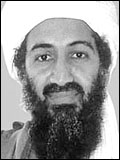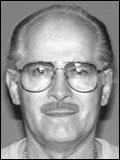Ten Most Wanted List

by David Johnson |
 Alleged U.S. Embassy terrorist Osama bin Laden. (Source/FBI)  Boston organized crime figure James J. 'Whitey' Bulger. (Source/FBI) Related Links |
It started in 1949, when a reporter from the International News Service decided to write a story about the "toughest guys" sought by the Federal Bureau of Investigation. In response, the FBI provided ten names of wanted criminals.
The article created a sensation. Delighted at the subsequent publicity, FBI Director J. Edgar Hoover began the Ten Most Wanted Fugitives program in March 1950.
Fugitives No Longer
Since then the list has become a standard crime-fighting tool for the FBI. By widely circulating the lists to media outlets and posting them in public buildings, the FBI has been able to enlist public help in finding what it calls serious offenders. As of November 22, 2012, there have been 497 fugitives on the list, 467 apprehended, including 154 nabbed as a direct result of tips from the public.
The internet has made the list even more universal, since it can be seen all over the world in a matter of seconds.
International Criminals
The makeup of the list has reflected the changing nature of American crime. At first, bank robbers, burglars, and car thieves dominated. In the 1960s, more fugitives were charged with destruction of government property, sabotage, and kidnapping.
As international organized crime and political terrorism increased in the 1970s, the make up of the list changed again.
Presently, organized crime figures, major international drug dealers, terrorists, and serial murderers predominate. Ramzi Ahmed Yousef, convicted of the World Trade Center bombing in 1997 and sentenced to 240 years in jail, was on the list from 1993 to 1995.
Recently replaced on the list are alleged mastermind in the 1998 bombing of the US Embassies in Kenya and Tanzania, Osama bin Laden, who was killed in 2011, and alleged Boston organized crime figure James J. 'Whitey' Bulger, who was captured in 2011.
Dangerous to Society
The FBI bureaucracy creates the list, starting with names submitted by the 56 FBI field offices.
In order to be listed, a suspect must be considered especially dangerous. Authorities must also believe the publicity would increase chances of apprehension.
Names Stay on the List
Fugitives remain on the list until they are captured, the charges against them are dropped, or they are no longer determined to be a menace to society. Only six suspects have ever been removed for this reason.
Public Enemy Number One
People sometimes confuse the Ten Most Wanted list with the "public enemies" lists released by the Chicago Crime Commission in 1930, and popularized by the 1931 James Cagney movie, The Public Enemy.
The popular Dick Tracy comic strip; the ABC radio network program, FBI, This Week; and the Fox network TV show, America's Most Wanted: America Fights Back, are all used to publicize the list.







